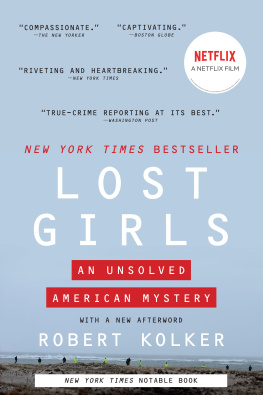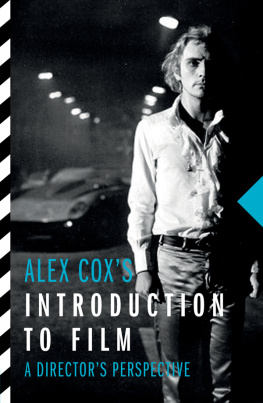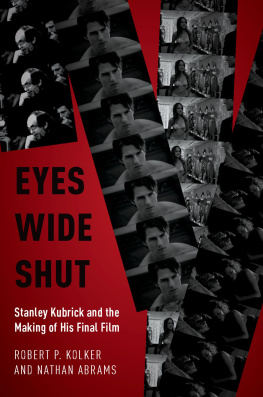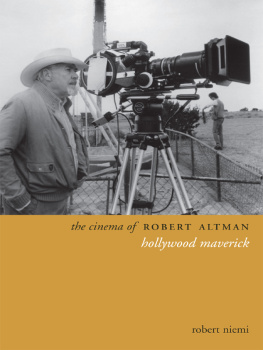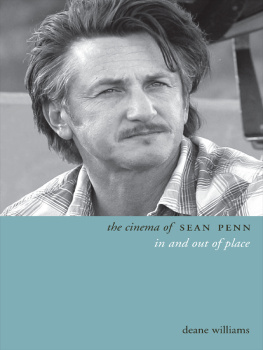A Cinema of Loneliness
A Cinema of Loneliness
FOURTH EDITION
ROBERT KOLKER


Oxford University Press, Inc., publishes works that further
Oxford Universitys objective of excellence
in research, scholarship, and education.
Oxford New York
Auckland Cape Town Dar es Salaam Hong Kong Karachi
Kuala Lumpur Madrid Melbourne Mexico City Nairobi
New Delhi Shanghai Taipei Toronto
With offices in
Argentina Austria Brazil Chile Czech Republic France Greece
Guatemala Hungary Italy Japan Poland Portugal Singapore
South Korea Switzerland Thailand Turkey Ukraine Vietnam
Copyright 1980, 1988, 2000, 2011 by Oxford University Press, Inc.
Published by Oxford University Press, Inc.
198 Madison Avenue, New York, New York 10016
www.oup.com
Oxford is a registered trademark of Oxford University Press
All rights reserved. No part of this publication may be reproduced, stored in a retrieval system, or transmitted, in any form or by any means, electronic, mechanical, photocopying, recording, or otherwise, without the prior permission of Oxford University Press.
Library of Congress Cataloging-in-Publication Data
Kolker, Robert Phillip.
A cinema of loneliness / Robert Kolker. 4th ed.
p. cm.
Includes bibliographical references and index.
Includes filmography.
ISBN 978-0-19-973002-5 (pbk.: alk. paper) ISBN 978-0-19-973888-5 (cloth: alk. paper) 1. Motion pictures
United States. 2. Motion picture plays, AmericanHistory and criticism. I. Title.
PN1993.5.U6K57 2011
791.43750973dc22
2010041474
1 3 5 7 9 8 6 4 2
Printed in the United States of America
on acid-free paper
CONTENTS
1. Bodys Montage, Historys Mise-en-Scne, Contours of the Horizontal Line
Arthur Penn, Oliver Stone, and David Fincher
2. Tectonics of the Mechanical Man
Stanley Kubrick
3. Expressions of the Streets
Martin Scorsese
5. Radical Surfaces and Independent Means
Robert Altman
American film begs us to leave it alone. From its beginnings, it has presented itself as an entertainment, as an escape; it is made to give pleasure, to excite, to offer us a surrogate reality. On occasion it offers examination of a social or political problem. But rarely has it taken itself very seriously, and it has not, until quite recently, been taken very seriously by its critics. In recent years many people have stopped leaving it alone. As critical scrutiny continues, it becomes more and more clear that, despite what most producers would like, film is not temporary, not fleeting; it has hadparticularly in those years from the early 1920s to the middle 1950s, when movies were the most popular form of entertainmenta cumulative effect, giving the culture a way of looking at itself, articulating its ideology, reflecting and creating its physical appearance and gestures, teaching and confirming its shared myths. The questions that continue to need asking are Why? and How?The deeper we probe, the more we discover about the ingenuity and the disingenuousness of American cinema, the ways it has used the intricacies of its formal structure to hide that structure and present itself as an unmediated presentation of reality, even when it was offering itself as an escape from reality. The more we look and the more we discover about American film, the more we discover about the methods of looking, about the ways film works on an audience and the audience on it.
The growth of serious critical inquiry into American cinema began as that cinema went into a decline. Beginning in the late fifties, production dropped, the studios collapsed, and the economic system of filmmaking degenerated into chaos. Television took over as the cultural image-maker, inheriting many of the attitudes, and few of the successes, of the major period of American filmmaking. These events permitted a space for inquiry, a convenient cleavage in cinema history. They also provided opportunities for some filmmakers to break out of the old production methods, the old assumptions of cinematic form and content, and to begin looking, along with some critics, at the nature of their medium, its history, its methods and effects. Their works began to move in more than one direction. Their films were, and are still, primarily entertainments, and the concern for making a profit determines all phases of their work. But despite, or even in the face of, this overriding and often crippling concern, some filmmakers have seriously attempted to confront and examine the form and content of what they do. They make detours into their cinematic past, they reflect on the films that preceded them, and they self-consciously call on the formal elements at their disposal to build a narrative and control audience participation with it. There has been little direct joining of forces of critic and filmmaker, but there has been an occasional paralleling of inquiry and an acknowledgment on both sides that film is a serious business, financially, formally, culturally.
Seven of these filmmakersArthur Penn, Stanley Kubrick, Martin Scorsese, Steven Spielberg, Robert Altman, and, in the current edition, Oliver Stone and David Fincherare the subjects of this study. The original group were part of a movement that was referred to as the new Hollywood, the Hollywood Renaissance, or the American New Wave, phrases that suggest they and others somehow changed or revitalized our cinema. Would that were the case. The ability of these filmmakers to function more independently than those who came before them, and their effect on filmmaking in general, have been rather compromised. What follows is an attempt to reach an understanding of the work, the independence, the compromise, and the effect of these filmmakers on American film, and the effect of that film on the culture at large.
American film has changed mightily over the thirty years covered by A Cinema of Loneliness. The corporate restructuring of Hollywood, begun in the 1950s, is complete. There are no independent studios, and small production companies come and go, often absorbed by larger media conglomerates. The brief period of directorial ascendance that was the original catalyst for this book was over by the 1990s. So, why a fourth edition? American film is still vibrant and inventive, and much remains to be said of it. The relative lack of strong directorial figures does not mean that American film at the beginning of the new century has been moribund. What it does mean is that an auteurist cinema has entered a recessive period and the still-active figures that make up the core of A Cinema of Loneliness have come to their late maturity. They have done this with a variety of films that reflect a ripening and an inevitable desire to gain as large an audience as possible. It also means that, with the death of three of the directors covered in this bookArthur Penn, Stanley Kubrick, and Robert Altmana time for summary is at hand.
The time of the director may be over. What were the terms of its existence in the first place? Perhaps it was a fantasy and the filmmakers discussed in A Cinema of Loneliness were as much figures of desire as they were of fact. Perhaps I needed them and held onto those marks of individual style in their work: the form and vision in their films that offered a complexity absent from the general run of American film. Schooled in literaturelike many who came to film studies in the 1960sI took for granted that an individual intelligence, an author, was responsible for the work at hand. When I came to film, I felt secure in the knowledge that there had to be a distinguishing characteristic of artistic personality, someone to admire for the work he or she had done. Someone who could be depended upon to continue that work with the same distinguishing style from film to film.
Next page

